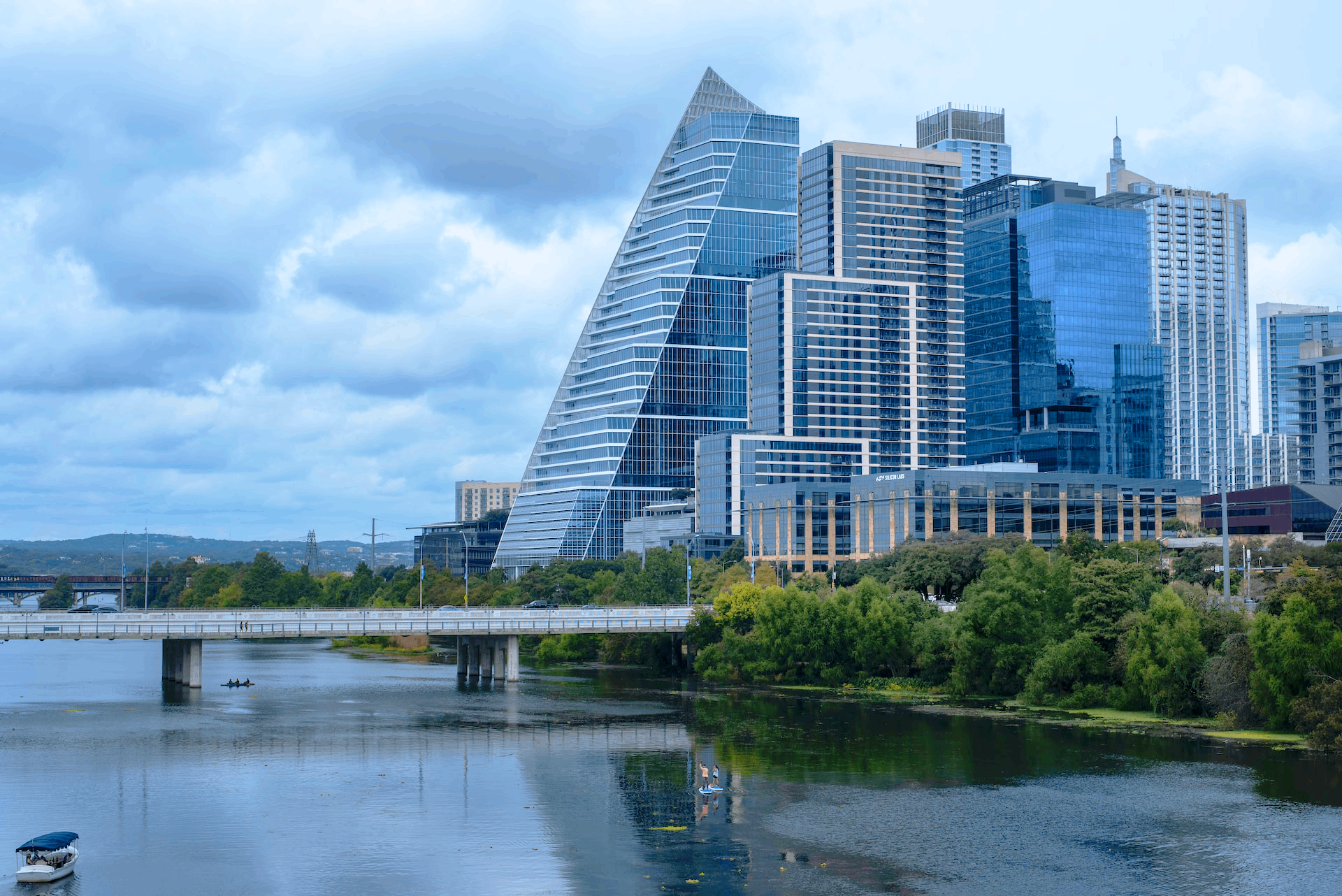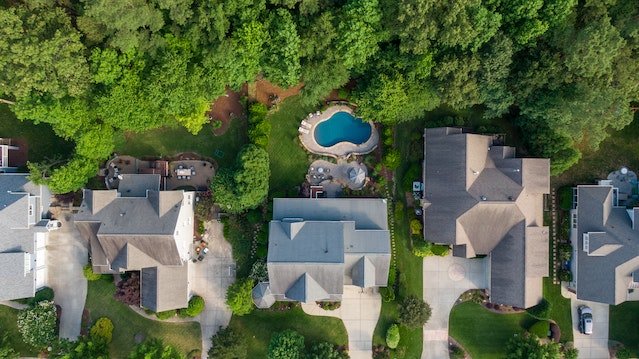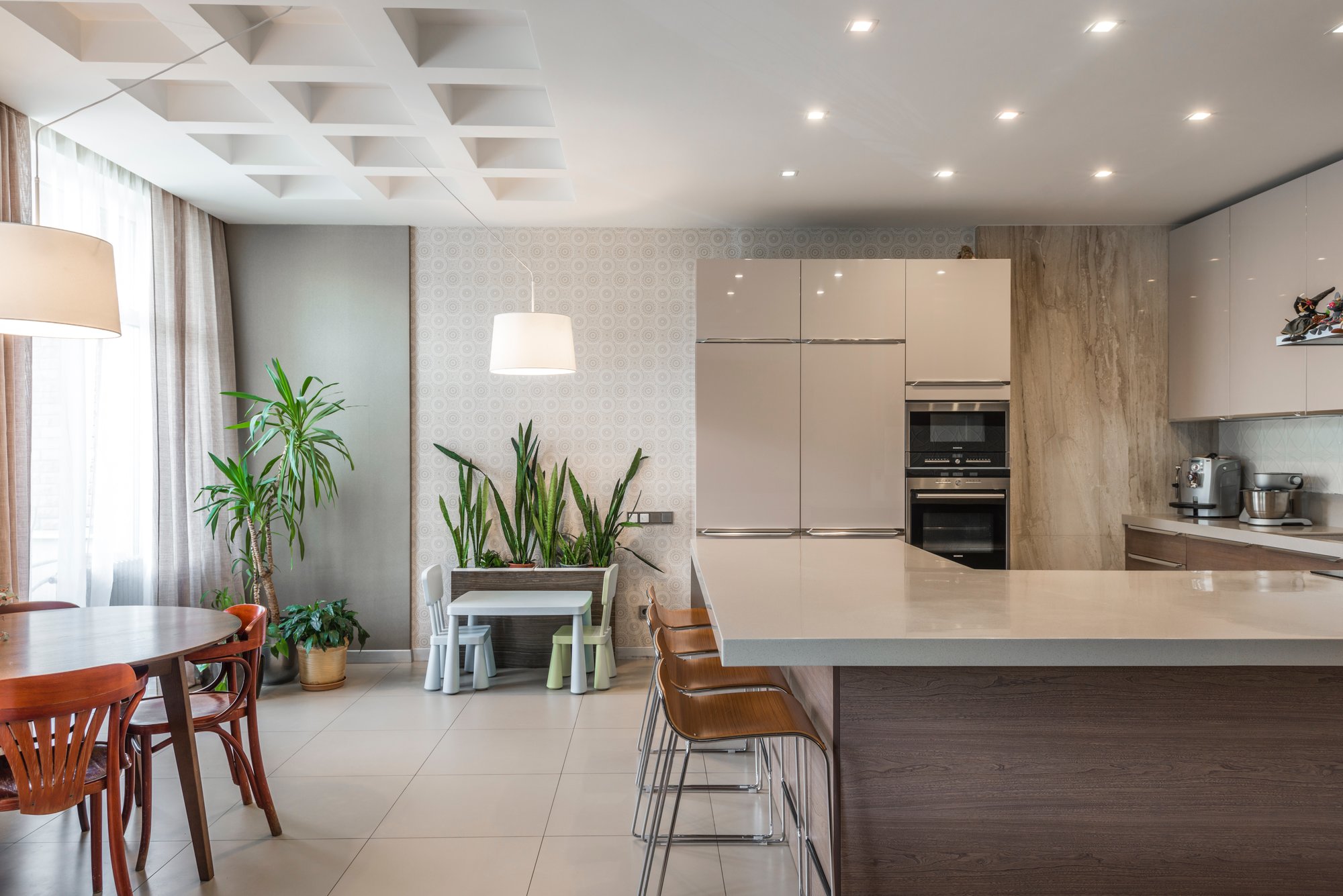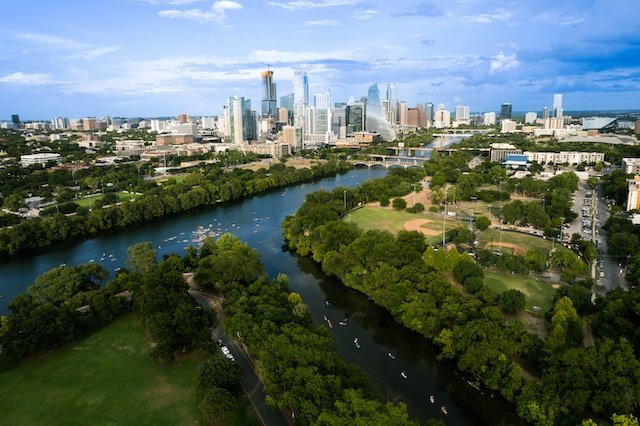Ever wondered what it's like to hunt for a place in the heart of Texas where tech startups bloom like bluebonnets in spring? Navigating Austin's rental landscape is akin to seeking a personal haven amidst its bustling, tech-savvy streets. With rents soaring as high as the temperatures, getting a handle on these figures is crucial.
Last year alone saw people gasping at their rental bills. Imagine opening an envelope and seeing that figure staring back at you. Yes, we're talking monthly costs that make even seasoned Austinites do a double-take.
The dance between demand and availability has turned renting here into something akin to finding water in Barton Springs during a drought—possible but requires effort and timing. And if recent trends are anything to go by, this game is only heating up.
Key Insights into Austin's Current Rental Market
-
Varied Pricing: Austin's rental prices are high but differ significantly. Average rents are around $1,753, with downtown areas reaching $3,257. Understanding demand, inventory, and economic factors is crucial.
-
Neighborhood Variety: Explore Austin's neighborhoods to maximize your budget. From affordable options in North Burnet to luxurious downtown living, there's a perfect spot for every preference.
-
Strategic Searching: Finding affordable housing in Austin requires timing, neighborhood exploration, and selecting the right property type. Conduct thorough market research and stay vigilant for the best deals.
-
Market Changes: Austin's rental market can be unpredictable. Stay informed about upcoming changes that could lower rents, and be ready to seize opportunities while balancing current practical needs.
Understanding Austin's Rental Market in 2024
The Current State of Rent Prices in Austin, Trends Influencing the Market
Let's cut to the chase: Living in Austin isn't getting any cheaper. But you probably already knew that, right? The average rent for an apartment here is a cool $1,753. Yep, you heard it right. And if we're talking about downtown Austin? Hold onto your wallets.
We've seen some reports throwing around numbers like $3,257 a month. That’s no pocket change. However (and this is where it gets interesting), there seems to be quite the range depending on who you ask and what they're measuring. Compared to other metros such as the Bay Area or New York, Austin remains to be a more affordable metro compared to these. Check out the average rent of the following cities below for a one-bedroom apartment with an approximate size of 700 sq ft:
- Average Rent in Austin: $1,446 (711 sq ft)
- Average Rent in Bay Area: $2,828 (584 sq ft)
- Average Rent in Los Angeles: $2,120 (698 sq ft)
- Average Rent in New York City: $3,784 (603 sq ft)
- Average Rent in Houston: $1,166 (723 sq ft)
- Average Rent in Dallas: $1,378 (713 sq ft)
- Average Rent in Boston: $3,453 (700 sq ft)
Digging deeper into those figures shows us something crucial - not all stats are created equal. A recent piece by Axios spotlighted that median rent could hit $2,930 per month in Austin. So, which one do we believe?

To get our heads around this madness called "rent prices," let's talk about trends influencing these dizzying digits:
- Rising Demand: More folks want to call Austin home because of its vibrant culture and booming tech scene.
- Limited Inventory: There just aren’t enough apartments for everyone who wants one; basic supply and demand at work here.
- Growing Economy: As job opportunities rise so does people’s willingness (or necessity) to pay more for housing close to work.
All these factors combined make finding affordable living space akin to hunting unicorns – possible but oh-so-rarely achieved without some serious know-how or luck.
Average rents can feel like moving targets with different sources citing different averages ($1,568...$1,490...$1,806...). What gives? Well friends, simply put: The way you look at it really makes all the difference.
But don't despair yet. We’re navigating through market inventory together; breaking down apartment types and neighborhood choices might just give us an edge in finding somewhere decent without breaking the bank completely.
"The table above reflects average rent prices..." - wait up though, We don’t have active data ready from every corner of town yet. Sounds familiar?
Yeah, this part hits hard when looking closer into neighborhoods likes Downtown Austin. So much buzz, yet so little clarity.
RELATED BLOGS:
- Austin vs. Bay Area: Why Techies Are Trading Coasts for Texas
- From LA to Austin: A Los Angeleno’s Guide to Embracing the Austin Vibe
- Austin vs. Colorado: A Comparative Guide for Aspiring Residents
Average Rent by Neighborhood in Austin
Comparing Costs Across Different Areas, Identifying Budget-Friendly Communities
Digging into the average rent in Austin, TX by neighborhood can feel like opening a treasure chest – but instead of gold, it's full of insights that could save you some serious cash. Let’s face it: everyone wants to find that perfect spot where their dollar stretches further without compromising on the vibe and amenities.
Finding an ideal spot in ATX doesn't have to break the bank or sacrifice your must-haves list. Whether it's sipping coffee at a local café in Hyde Park or catching live music downtown after work - there's something for every taste and budget around here.

Tight budgets need not despair; places like Windsor Hills, Garrison Park, or North Lamar show us that affordable living does exist within city limits—proving once again why people love calling Austin home.
Surely though, finding that 'just right' place takes some digging—and now you’ve got a solid starting point with our rundown on cost-friendly communities versus those luxury locales asking top dollar.
Strategies for Finding Affordable Housing in Austin
Navigating Market Inventory for Better Deals, Utilizing Property Types to Your Advantage
Finding a place that feels like home without breaking the bank in Austin? Sounds like a tall order, but it's doable. Diving into the process, let's explore how to clinch that perfect spot without overstretching your budget.
First off, navigating market inventory is key. Mastering the art of timing and discovering the right spots is essential. And guess what? The early bird doesn't just get the worm; they also get the best apartment deals in town. Start your search before peak moving seasons – think late winter or early spring – when competition is lower.
- Downtown digs costing too much? Look further out. Neighborhoods just outside central areas often offer more bang for your buck.
- Stay vigilant with the listings every day, and when you spot a steal, leap at it without hesitation. Apartments can go fast.

Moving onto our next tactic: utilizing property types to your advantage.
Austin has an array of housing options - from chic studios to spacious houses. But here's something cool - not all properties cost an arm and leg:
- Studios are the smallest but also the most affordable, perfect if you're flying solo or don’t need much space.
- If you crave more room or have roommates lined up, checking out 1-bedroom or 2-bedroom apartments makes sense as they strike a nice balance between cost and living space.
The trick lies in comparing these options against each other using their bedroom counts and average rent prices (e.g., studios vs one-bedrooms vs two-bedrooms etc.) . Doing so helps paint a clearer picture of what kind of bang you’re getting for your buck across various property types in Austin.
Remember folks, finding affordable housing isn't just luck; it's strategy.
The Impact of Local Events on Rental Prices
How Weather and Legal Changes Affect Housing Costs
And just when you think it’s all about location, size, or the number of hip coffee shops nearby, along come two curveballs: weather and legal changes. Let’s break this down.
Strong storms in Central Texas, for starters. These aren't your average rainy days that just ruin picnics. We're talking about storms that can cause real havoc – from flooding homes to knocking out power lines. After such events, finding an apartment can get tougher than winning at Monopoly against your know-it-all cousin.
You might wonder why? Well, damage means repairs and repairs mean money. Landlords facing sudden costs often have no choice but to raise rent prices to cover them.
This doesn’t only affect new builds either; it impacts existing properties too. If there are fewer hands available or if laws change suddenly, maintaining properties becomes costlier or slower—again pushing those pesky rent prices up.
- Renters feel the brunt when unexpected weather trashes neighborhoods,
- Laws shake up labor markets crucial for keeping our homes tip-top,
- All while we’re just trying to find a nice place within budget.
In short? What happens outside our windows affects what goes on inside our wallets – especially when hunting for rentals in Austin.
Monthly Cost Breakdown for Renters in Austin
Understanding Your Financial Commitment
Austin's got the vibes, the music, and let's not forget - a pretty penny to pay if you're looking to call this place home. Let’s talk numbers because they matter when it comes to figuring out your monthly financial commitment.
The average rent in Austin? It hovers around $1,753. Yet, that barely begins to cover the whole story. So, what exactly does shelling out that amount of cash snag you in today's market?
- Studio apartments: They’re on the more affordable side but remember – smaller space.
- One-bedroom apartment: This will set you back about $1,698 on average.
- Two bedrooms: Now we’re talking $2,257 on average each month.
- Houses for rent?: For more room to stretch those legs - an average of $2,500 monthly.
Sure sounds like a lot right? Location matters too. Downtown’s always gonna ask for more cash compared to other neighborhoods. A cozy spot downtown can have you shelling out up to $3,212 per month.
All these numbers making your head spin? Well, hold tight cause there’s more than just rent ticking away at your wallet every month. Think utilities (yes including high-speed internet), parking spots (if driving is your jam), or maybe even pet fees (cause furry friends are family).
The takeaway here? Budgeting wisely means knowing what goes into that monthly cost beyond just "rent". It’s all about balance and picking what fits best with your lifestyle and wallet size in mind.
Cause guess what? In Austin – where creativity meets community – finding a place shouldn’t be stressful; it should feel like discovering another piece of this city's heart beat by beat... as long as those beats don't break the bank.
Future Predictions for the Rental Market in Austin
Anticipating Changes and Preparing Accordingly
One minute you're up, enjoying relatively stable rent prices; the next, you're hurtling down into a downturn. Yet, isn't it the thrill of unpredictability that adds a bit of zest to the whole experience? Embarking on this journey, we're steering through the ebbs and flows of fluctuating market dynamics.

The word on the street (and by "street," I mean data analysts and housing experts) suggests we might see some shifts soon. So buckle up. Market dynamics and financial tweaks might soon lead to a decrease in rental prices, offering some breathing room. That means if you've been stressing over sky-high rents, there could be relief on the horizon.
- Economic Fluctuations: The economy plays a big part in this dance. When things tighten up economically speaking, people get cautious with their spending - including landlords.
- New Developments: More apartments are popping up all over town. An increase in available properties might result in more competitive rental rates as landlords vie for tenants.
- Tech Influence: With more folks working remotely than ever before thanks to our tech-savvy world, some may choose living further from city centers – potentially easing downtown demand.
We’ve seen hints of this already with reports indicating an upcoming dip in Austin’s once soaring rent prices.
This doesn’t mean everyone should wait around hoping for cheaper rents tomorrow though - especially if your lease is ending soon or you’ve found something that fits just right today. Renting smart means keeping an eye out but also knowing when to leap. Navigating the terrain requires a blend of grabbing hold of present chances while staying open to what might come down the road.
In other words? Stay informed but don't let prediction paralysis stop you from making moves now that make sense for your situation. Because let’s face it – predicting anything perfectly is tough business indeed.
Final Thoughts
The numbers have spoken: rents that make wallets tremble, neighborhoods with personalities as diverse as their price tags, and market trends that sway like trees in those strong Central Texas storms. We've uncovered secrets to finding affordable corners in Austin's mosaic of communities and peeked into how events around us subtly nudge those monthly figures up or down.
While navigating Austin's rental market can offer flexibility, there's something truly special about the idea of owning your own home in this vibrant city. With rising rental prices and the potential for long-term equity growth, now could be the perfect time to consider leaping into homeownership.
If you're ready to take the next step towards homeownership, our team of real estate experts is here to guide you through every stage of the process. Click here to speak to one of our experts today and discover how you can turn your dream of owning a home in Austin into a reality. Don't wait any longer – your perfect home is just a click away!
Posted by Ryan Rodenbeck on


Leave A Comment